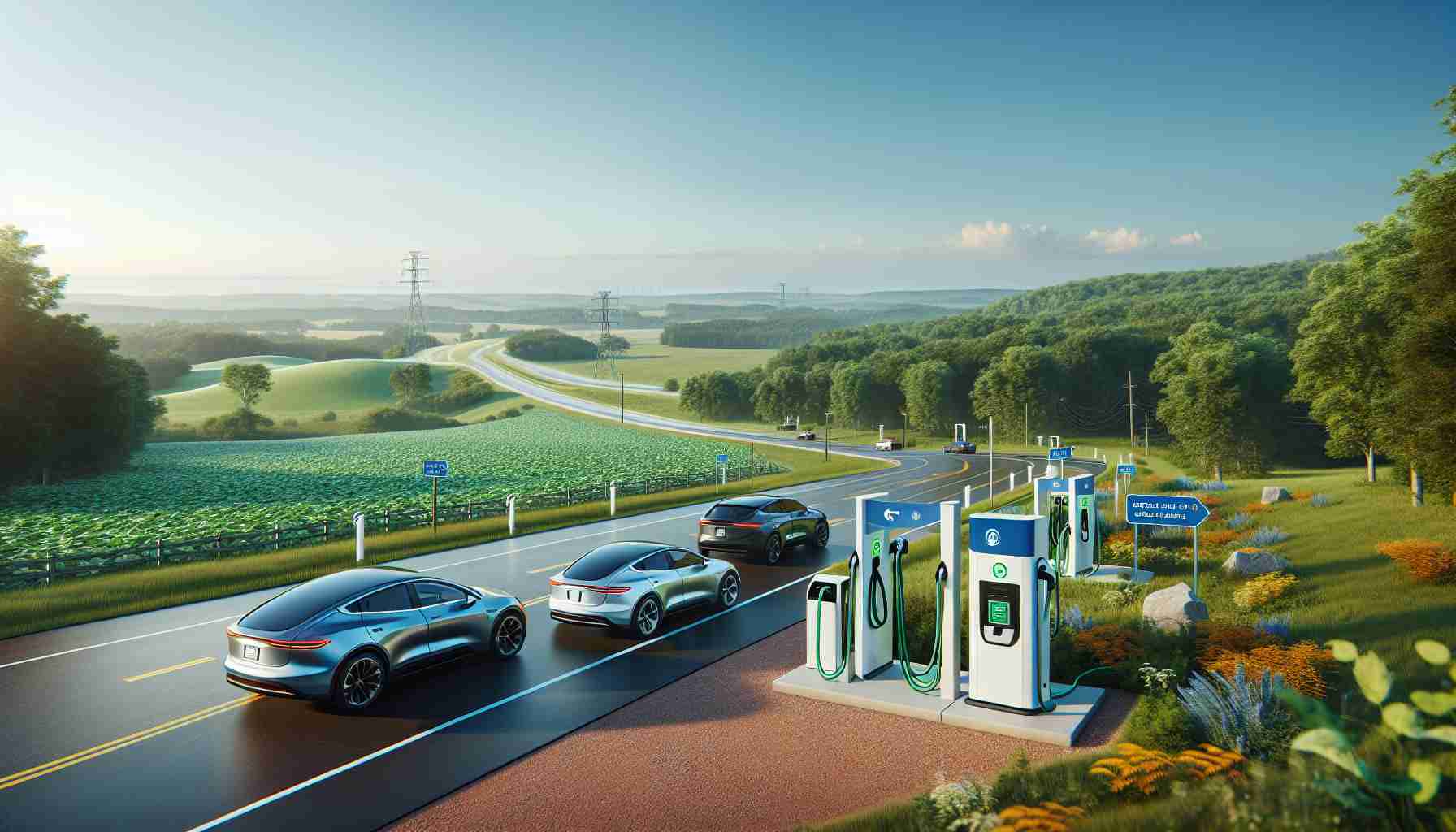- Governor Tony Evers introduced new EV charging stations in Chippewa Falls, highlighting Wisconsin’s commitment to sustainability.
- The initiative is supported by a $23 million investment from the Bipartisan Infrastructure Law.
- Fast-charging stations are now available at key Kwik Trip locations, enhancing infrastructure for over 29,000 EV owners in the state.
- A total of 53 charging projects are planned, promoting community involvement with a minimum of 20% matching investment required from local businesses.
- Wisconsin aims to establish itself as a leader in the electric vehicle movement while boosting tourism and environmental responsibility.
In a groundbreaking initiative, Governor Tony Evers recently visited Chippewa Falls to unveil new electric vehicle (EV) charging stations, signaling a sustainable future for Wisconsin’s travel landscape. With a striking investment of $23 million sourced from the Bipartisan Infrastructure Law, the state aims to supercharge its commitment to electric mobility. This ambitious project not only fosters environmental responsibility but also enriches the state’s tourism industry.
The excitement is palpable as fast-charging stations have already popped up at popular Kwik Trip locations in Menomonie, Chippewa Falls, and Ashland. These stations are revving up for an influx of EV drivers, enhancing connectivity for the 29,000 electric car owners in Wisconsin and attracting travelers cruising through the state. The Governor emphasizes the significance of these stations, highlighting their role in weaving a robust network that supports the burgeoning EV culture, while promoting Wisconsin as a prime destination for electric vehicle enthusiasts.
With a total of 53 charging projects lined up across the state, Wisconsin is poised to become a leader in the electric vehicle movement. Notably, these projects require a minimum of 20% matching investment from local business owners, fostering community involvement in this revolutionary shift.
As Wisconsin embraces this electrifying change, it stands at the forefront of a sustainable transportation revolution, inviting more visitors to explore its scenic beauty. The key takeaway? The rise of electric vehicle charging stations is not just about cars—it’s a leap towards a cleaner, greener, and more prosperous future for all. Get ready to charge up your adventures in the Badger State!
Wisconsin’s Electric Future: How EV Charging Stations Are Transforming Travel
Strategic Insights into Wisconsin’s Electric Vehicle Initiative
Wisconsin is making headlines with its $23 million investment in electric vehicle (EV) charging stations, aimed at revolutionizing its transportation infrastructure. This initiative is a vital part of the state’s broader sustainability goals and is expected to have significant economic and environmental impacts.
Key Features of the Initiative
1. Wide Network of Fast-Charging Stations: The project includes fast-charging stations at key locations, including popular Kwik Trip outlets. This will notably enhance accessibility for the 29,000 EV owners in the state and encourage EV tourism.
2. Community Investment: Local business participation is crucial, with a requirement for a minimum 20% investment from businesses involved in the installation of these charging stations. This encourages local economies to thrive alongside the EV movement.
3. Total Projects: A total of 53 charging projects are on the horizon, which showcases the commitment to a structured and expansive EV infrastructure.
Trends and Insights
– Sustainable Transportation: With a focus on sustainability, the initiative not only supports environmental protection but positions Wisconsin as a leader in electric mobility.
– Tourism Boost: As WI promotes itself as an EV-friendly destination, the tourism sector stands to benefit significantly from this initiative, attracting a new demographic of eco-conscious travelers.
Limitations
While the initiative is ambitious, challenges exist:
– Public Awareness: There may be a need for more public awareness campaigns to educate potential users about the advantages and functionalities of the EV charging network.
– Infrastructure Lag: As demand increases, the speed at which charging stations are rolled out could impact the effectiveness of the project unless managed meticulously.
Pricing and Market Forecast
– The funding from the Bipartisan Infrastructure Law presents a favorable economic landscape for future investments in EV infrastructure. This trend is expected to accelerate, making electric vehicles more accessible to a broader audience.
Predictions for the Future
By 2025, Wisconsin aims to significantly increase its EV charging capacity, anticipating a surge in electric vehicle ownership that could exceed current estimates. The state is set to become a model for integrating sustainable practices into modern transportation systems.
Related Questions
1. What are the environmental benefits of electric vehicle charging stations?
– Electric vehicle charging stations greatly reduce greenhouse gas emissions compared to traditional fossil fuels, promoting cleaner air and supporting climate change mitigation.
2. How can businesses participate in Wisconsin’s EV movement?
– Businesses can get involved by investing the required matching funds in charging station projects, while also potentially boosting foot traffic and consumer visits.
3. What are the challenges facing the implementation of EV infrastructure?
– Key challenges include ensuring adequate public awareness, securing necessary funding for expansion, and maintaining the technology and reliability of the charging stations.
For more information on electric vehicles and sustainable initiatives, check out Wisconsin Government and Environmental Protection Agency.



















